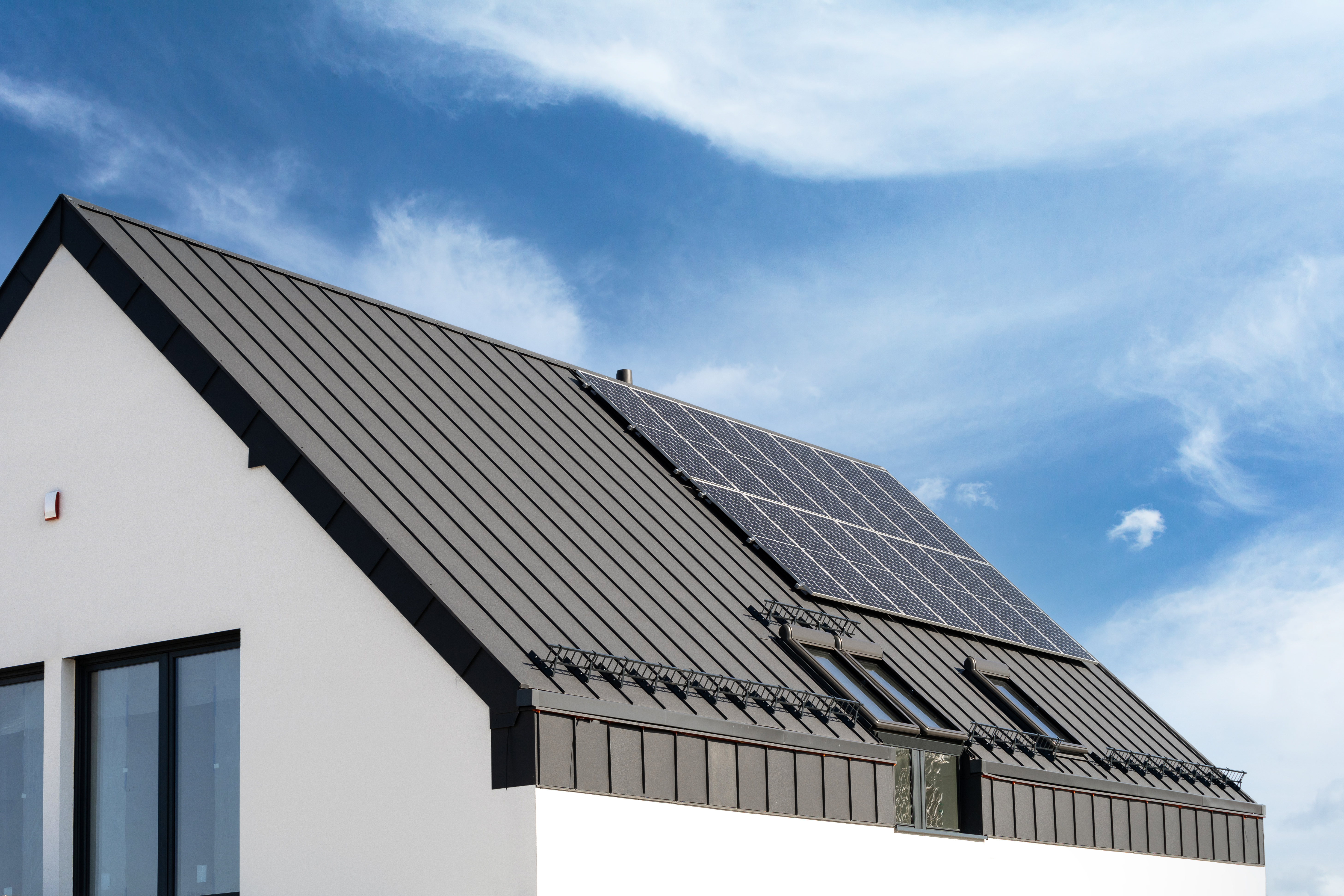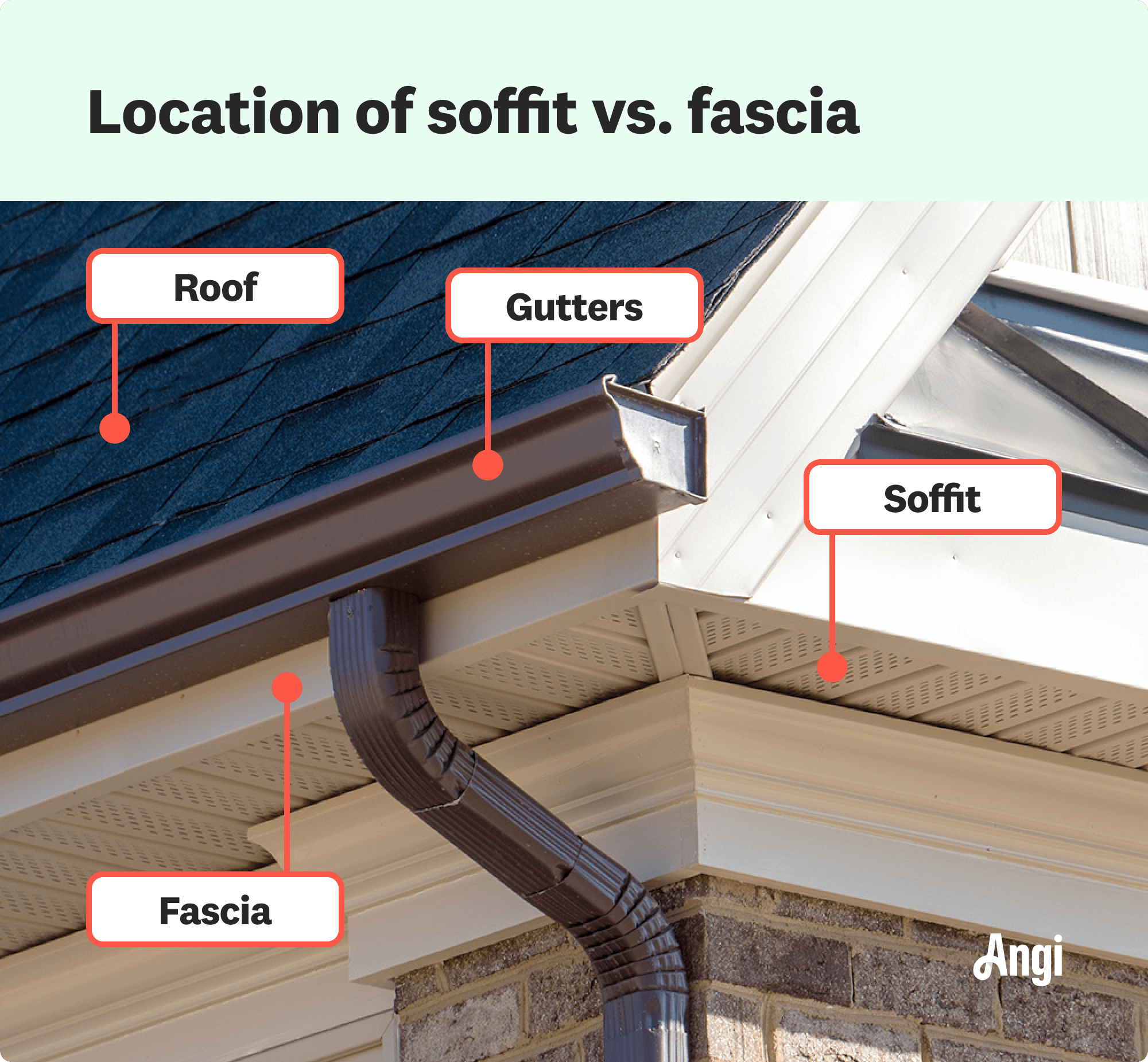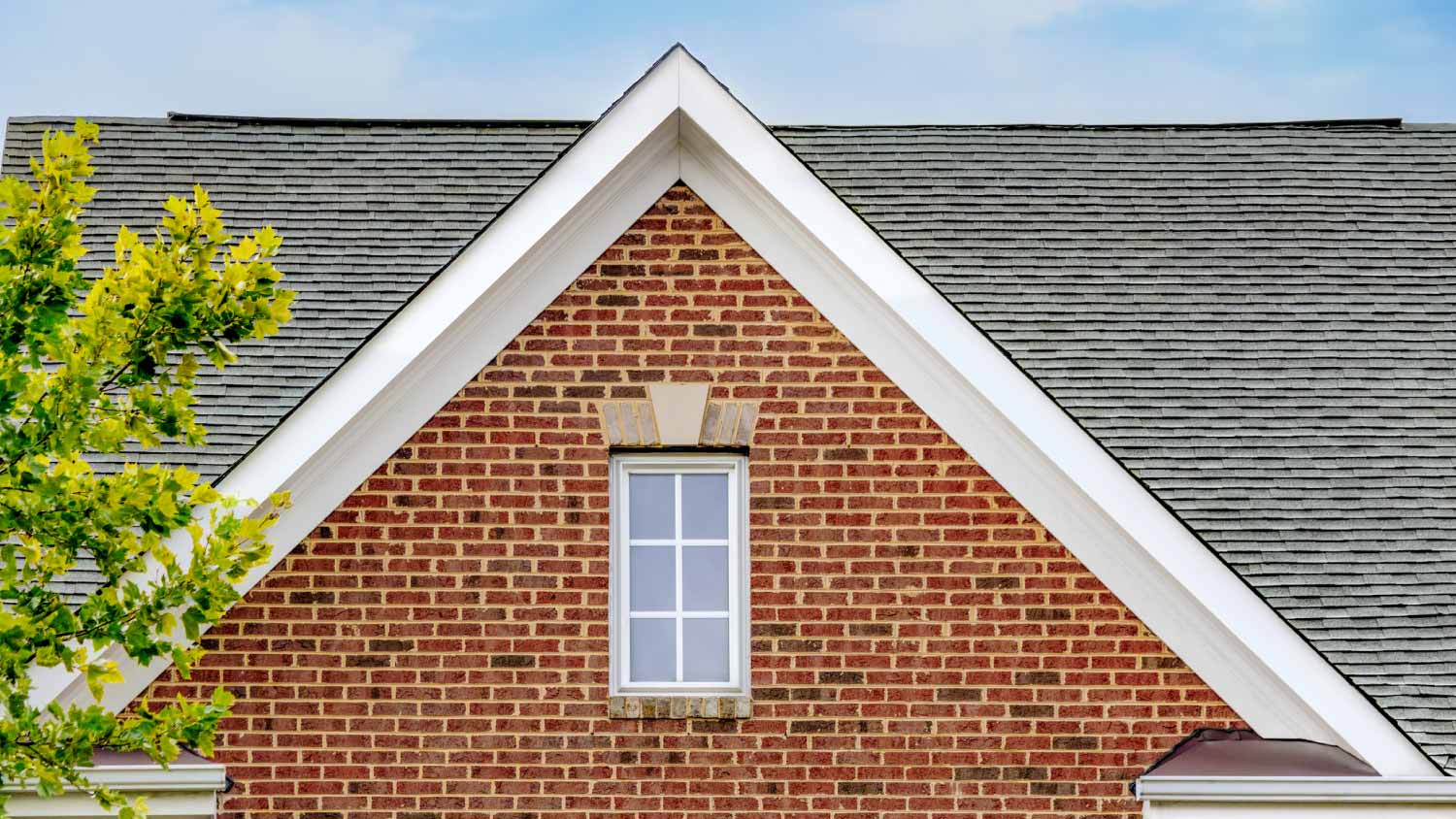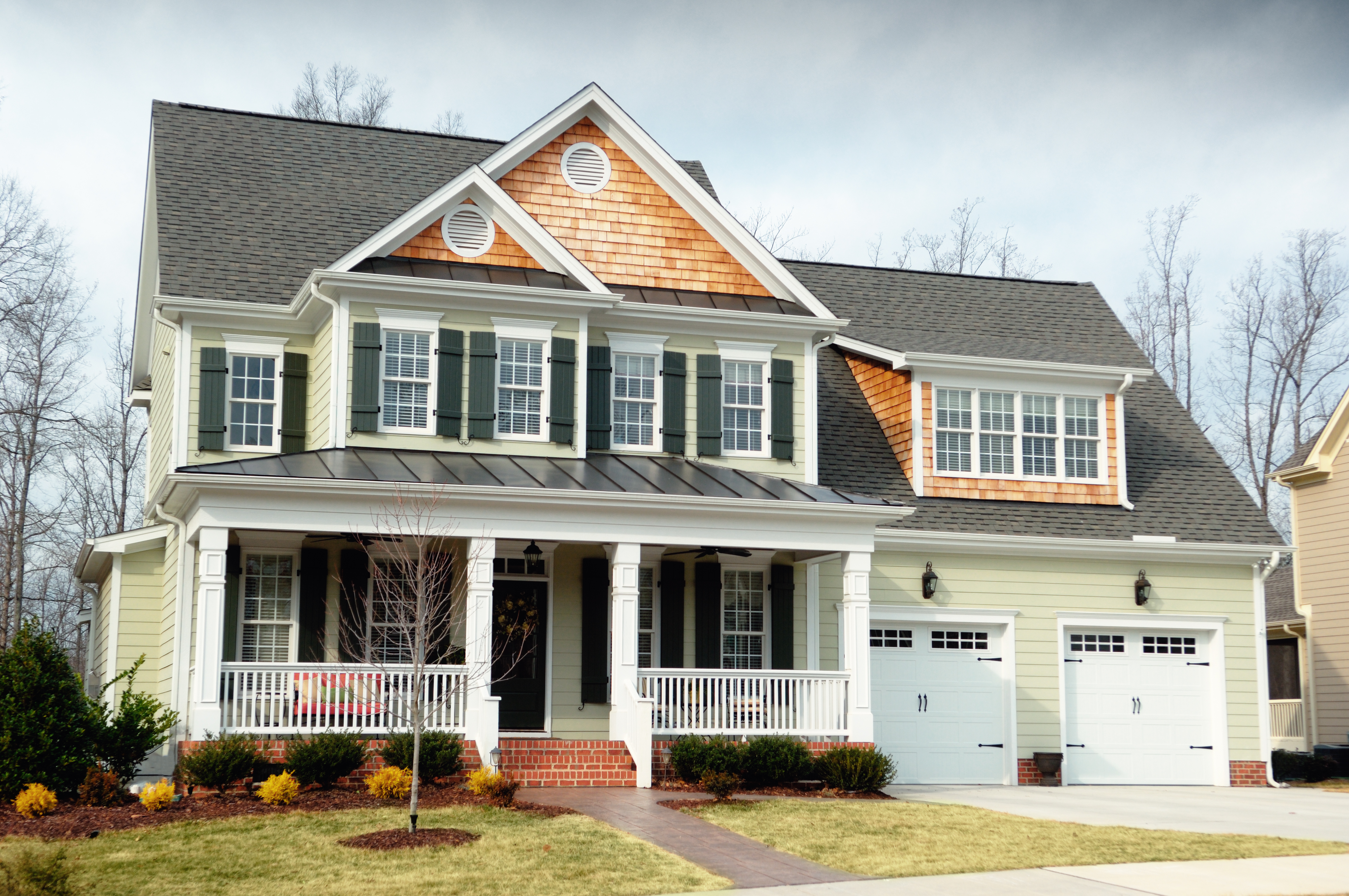
A metal roof can defend your home against Ohio’s varying weather conditions. Learn how much a metal roof costs in Columbus, OH.
Know the roles of these two key roof players


Soffit and fascia both protect your home from moisture.
Fascia is most often made of wood; soffit is often aluminum or steel.
Fascia runs parallel to the roof edge, and the soffit runs underneath it.
If you're building a home or repairing your roof, you may wonder: What's the difference between soffit and fascia?
These two roof parts work together to help protect your house from moisture, but they’re located in different areas and are sometimes made of different materials. Learning about soffit and fascia can help you know when to call a local roofing repair pro if you suspect any issues with these two roofing features.

Soffit and fascia work together to keep moisture away from a home, but they have some key differences.
Fascia are the horizontal boards that line the section beneath a roof overhang. They attach to the gutters and run parallel along the roof edge all the way around the perimeter of a house. They are also front-facing and can be easily seen from the street.
On the other hand, soffits are a venting mechanism that can be installed underneath a roof overhang—or eaves—to allow better airflow and keep moisture out of attics and roof decks. This is why they’re sometimes called eave soffit vents. Unlike fascia, they’re not easily visible, nor are they always necessary. There are a number of other roof ventilation options worth considering as well.
| Type of Difference | Soffit | Fascia |
|---|---|---|
| Location | Under eaves | Parallel to roof edge |
| Purpose | Improve airflow | Protect main structure from moisture |
| Cost | $1 to $3 per linear foot | $1.50 to $4.50 per linear foot |

While fascia and soffit serve similar purposes, there are some slight variations in the way they function.
For instance, fascia is considered a type of trim, whereas soffit is not. In addition to providing extra protection from moisture, fascia also supports the roof edge and keeps the gutters in place. This is also why it’s a mandatory feature while its counterpart is not.
By contrast, soffit doesn’t reinforce the roof structure in any way. Instead, its main purpose is to circulate fresh air underneath the roof to prevent water-logging and mold growth—two of the main culprits behind common roof damages. Soffit can also be a boon for other home features located in or near the roof, like attics or roof decks, as it’ll keep them dry and properly ventilated and make it more difficult for pests to get inside.
These two roof features differ in where they’re located, design, and material.
One of the biggest differences between fascia and soffit is where each is located. Fascia being a type of trim, runs parallel along the roof edge and is easy to see, whereas soffit is installed beneath the roof edge or eaves and is parallel with the ground. You can only see soffit if you’re standing directly beneath your roof and looking straight up.
Since soffit isn’t easily visible, you don’t have to worry about what it looks like as much as you do with fascia. By contrast, you can’t miss the front-facing feature that is fascia, which is why it must meld well with the rest of your home’s exterior. Factors like material, color, and style for fascia will play a more important role in the decision-making process than it will for soffit.
Although soffit and fascia can be made out of all the same materials, some are more commonly used than others. For example, standard and pressure-treated wood are among the most popular picks for fascia, but you can also find options made from polyvinyl chloride (PVC), aluminum, vinyl, and fiber cement.
On the flipside, aluminum and steel are the most commonly used material for soffit. However, soffit can also be made from wood, PVC, and fiber cement. Each option comes with pros and cons, so it’s a good idea to get to know the differences between soffit and fascia materials.
How much you pay for soffit and fascia will depend largely on which materials you use. Fascia costs range from $1 to $3 per linear foot of wood board and up to $5 to $8 per linear foot of vinyl boards. All in all, you can expect to pay between $150 and $3,800 for fascia projects ranging from 25 to 300 linear feet in scope.
The cost of wood soffit starts out slightly higher than fascia, at between $1 and $4.50 per linear foot. However, other choices are less expensive, like vinyl soffit, which costs $1 to $2 per linear foot.
D1 Roofing delivers outstanding service from beginning to end, backed by a strong warranty and expert teams. I highly recommend them for their excellence in meeting and surpassing expectations with unmatched communication. Choosing D1 Roofing was flawless decision
I am really impressed with their timeliness and turnaround. Mitchell came out, and we decided to move forward with their pricing. Our roof was on within a week, and we could not be happier with their team! Amazing company, great prices and honest, dependable craftsmanship. I highly recommend...
We used Unique Hardwood Floor LLC three years ago to work on the floors of a 70 year old home that needed a great deal of work. Some floors needed repairs, some were replaced and others just needed to be refinished. It was a complicated job as they needed to blend the old and the new to...
While Naaman and Mike were very professional and amicable to work with, there were issues in this project that makes giving a higher rating impossible. We had several communications issues that delayed completion. The roofers accessed the property without communicating with me. Just showed up...
Lyle did a great job removing asbestos shingles from our front porch roof. They worked together with our roofer to make sure that the new roof was able to be installed on the same day that Lyle removed the asbestos shingles.
A wild goose chase. Maybe this is no big deal since this was not an emergency - not a tree that had crashed through my roof - just a nuisance tree that needs to be removed. Even so, it strikes me as quite careless and perhaps a bit rude.
From average costs to expert advice, get all the answers you need to get your job done.

A metal roof can defend your home against Ohio’s varying weather conditions. Learn how much a metal roof costs in Columbus, OH.

Learn about roof replacement costs in Columbus and what factors are at play to budget accurately and make sure you’re getting a fair price.

Dealing with a visibly damaged roof or leak? Learn about roof repair costs in Columbus to see how much you’ll need to budget for a permanent solution.

Not sure if you need a new roof yet? Check out these warning signs that you need a new roof to catch roof problems early.

An attic without proper ventilation can cause a number of roofing problems, inside and out. Here’s how you can tell if a poorly ventilated attic is wrecking your roof.

What's a cupola? Is it possible to have one on my home? What do they look like? Learn all about the variety of cupolas you can add to your home or barn.